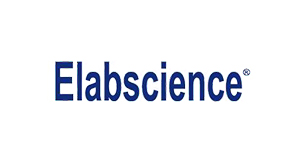Recombinant Human Galectin-3/LGALS3 Protein
Recombinant Human Galectin-3/LGALS3 Protein
SKU
ELSPKSH032474-50
Packaging Unit
50μg
Manufacturer
Elabscience Biotechnology
Availability:
loading...
Price is loading...
Protein Tag: None
Uniprot: P17931
Accession: P17931
Background: The Galectin family of proteins consists of beta-galactoside binding lectins containing homologous carbohydrate recognition domains (CRDs). They also possess hemagglutination activity; which is attributable to their bivalent carbohydrate binding properties. Galectins are active both intracellularly and extracellularly. They have diverse effects on many cellular functions including adhesion; migration; polarity; chemotaxis; proliferation; apoptosis; and differentiation. Galectins may therefore play a key role in many pathological states; including autoimmune diseases; allergic reactions; inflammation; tumor cell metastasis; atherosclerosis; and diabetic complications. The galectins have been classified into the prototype galectins (1; 2; 5; 7; 10; 11; 13; 14); which contain one CRD and exist either as a monomer or a noncovalent homodimer. The chimera galectins (Galectin3) containing one CRD linked to a nonlectin domain; and the tandem repeat Galectins (4; 6; 8; 9; 12) consisting of two CRDs joined by a linker peptide. Galectins lack a classical signal peptide and can be localized to the cytosolic compartments where they have intracellular functions. However; via one or more as yet unidentified nonclassical secretory pathways; galectins can also be secreted to function extracellularly. Individual members of the galectin family have different tissue distribution profiles and exhibit subtle differences in their carbohydrate-binding specificities. Each family member may preferentially bind to a unique subset of cell surface glycoproteins.
Bio Acitivity: Not validated for activity
Sequence: Ala2-Ile250
Purity: > 95 % as determined by reducing SDS-PAGE.
Formulation: Lyophilized from a 0.2 μm filtered solution of 50mM HEPES, 5% Sucrose, 5% Mannitol, 0.06%Tween 80, pH7.5.
Normally 5% - 8% trehalose, mannitol and 0.01% Tween 80 are added as protectants before lyophilization.
Please refer to the specific buffer information in the printed manual.
Reconstitution: Please refer to the printed manual for detailed information.
Endotoxin: < 1.0 EU per μg of the protein as determined by the LAL method.
Calculated MW: 26.0 kDa
Observed MW: 30 kDa
Uniprot: P17931
Accession: P17931
Background: The Galectin family of proteins consists of beta-galactoside binding lectins containing homologous carbohydrate recognition domains (CRDs). They also possess hemagglutination activity; which is attributable to their bivalent carbohydrate binding properties. Galectins are active both intracellularly and extracellularly. They have diverse effects on many cellular functions including adhesion; migration; polarity; chemotaxis; proliferation; apoptosis; and differentiation. Galectins may therefore play a key role in many pathological states; including autoimmune diseases; allergic reactions; inflammation; tumor cell metastasis; atherosclerosis; and diabetic complications. The galectins have been classified into the prototype galectins (1; 2; 5; 7; 10; 11; 13; 14); which contain one CRD and exist either as a monomer or a noncovalent homodimer. The chimera galectins (Galectin3) containing one CRD linked to a nonlectin domain; and the tandem repeat Galectins (4; 6; 8; 9; 12) consisting of two CRDs joined by a linker peptide. Galectins lack a classical signal peptide and can be localized to the cytosolic compartments where they have intracellular functions. However; via one or more as yet unidentified nonclassical secretory pathways; galectins can also be secreted to function extracellularly. Individual members of the galectin family have different tissue distribution profiles and exhibit subtle differences in their carbohydrate-binding specificities. Each family member may preferentially bind to a unique subset of cell surface glycoproteins.
Bio Acitivity: Not validated for activity
Sequence: Ala2-Ile250
Purity: > 95 % as determined by reducing SDS-PAGE.
Formulation: Lyophilized from a 0.2 μm filtered solution of 50mM HEPES, 5% Sucrose, 5% Mannitol, 0.06%Tween 80, pH7.5.
Normally 5% - 8% trehalose, mannitol and 0.01% Tween 80 are added as protectants before lyophilization.
Please refer to the specific buffer information in the printed manual.
Reconstitution: Please refer to the printed manual for detailed information.
Endotoxin: < 1.0 EU per μg of the protein as determined by the LAL method.
Calculated MW: 26.0 kDa
Observed MW: 30 kDa
| SKU | ELSPKSH032474-50 |
|---|---|
| Manufacturer | Elabscience Biotechnology |
| Manufacturer SKU | PKSH032474-50 |
| Package Unit | 50μg |
| Quantity Unit | STK |
| Reactivity | Human |
| Host | Escherichia Coli |
| Product information (PDF) |
|
| MSDS (PDF) |
|

 Deutsch
Deutsch










